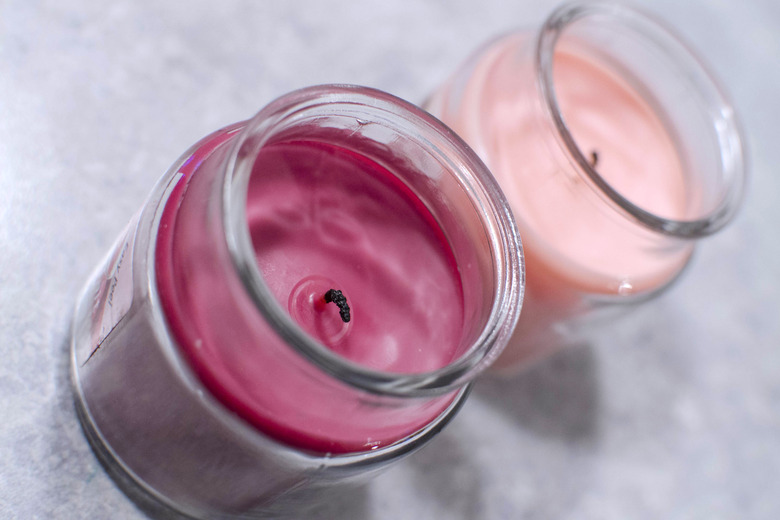Science Fair Projects On Which Candle Will Burn Faster
Candles burn slowly because the heat from the flame must first melt the wax before it can burn the wick. Candles vary in color, shape and size and candle wax is made from a variety of materials, including gel and animal fats. These differences can cause candles to burn at different rates. Science projects can explore whether color, temperature, material or positioning will affect a candle's burn rate.
Color
Color
Determine whether the color of a candle affects its burning speed. Use at least two of four different colors of candles that are the same brand, material and shape. Mark a line about one inch down from the top of each candle. Light the first candle and, using a stopwatch, time how long it takes the wax to burn down to the line. Repeat for the second candle of the same color and average the results. Repeat the experiment for the remaining colors of candles. Determine why some colors would burn faster than others.
Temperature
Temperature
Experiment with temperature to determine whether a room temperature candle will burn faster than a frozen candle. Gather six identical candles. Place two in the freezer for 24 hours and leave the rest in the room you'll be experimenting in for the same amount of time. Light two candles at room temperature and time how long they burn. This establishes a baseline for your experiment. Then light a frozen and a room temperature candle at the same time. Leave them to burn until they go out on their own. Repeat burning for the second candles and average the times. Determine why one candle burns faster.
Material
Material
Determine whether the material used to make a candle will affect how fast it burns Gather at least three different types of candles, such as beeswax, paraffin and gel. Find candles of the same shape, size and color. Light the first candle and time how long it burns. Repeat with the other materials and time those as well. Repeat the experiment a second time and average each result. Determine which type of candle burned the fastest. Research how each type of candle is made to supply a reason for your results.
Position
Position
Experiment to determine whether gravity will affect how fast a candle will burn. Bend one end of two pieces of wire into a circle to form a base. Bend the other one so that a birthday candle fits into it pointing up and another one fits pointing down. Weigh each candle in its base. Light the upright candle and leave it to burn for one minute. Observe the color, shape and size of the flame. Put out the flame and weigh the candle in its holder. Determine how much mass was lost in burning. Place the downward facing candle into a foil pan and repeat the experiment. The candle should be at an angle of about 70 degrees from horizontal. If the angle is too steep, the dripping wax will put out the flame. Note which candle burned faster and whether the colors and shapes were different. Position a candle horizontally as well or repeat the experiment, placing the candles in a jar and allowing them to burn completely. Determine whether the burn rate changed inside the jar.
Cite This Article
MLA
Miller, Renee. "Science Fair Projects On Which Candle Will Burn Faster" sciencing.com, https://www.sciencing.com/science-projects-candle-burn-faster-8109149/. 24 April 2017.
APA
Miller, Renee. (2017, April 24). Science Fair Projects On Which Candle Will Burn Faster. sciencing.com. Retrieved from https://www.sciencing.com/science-projects-candle-burn-faster-8109149/
Chicago
Miller, Renee. Science Fair Projects On Which Candle Will Burn Faster last modified August 30, 2022. https://www.sciencing.com/science-projects-candle-burn-faster-8109149/




